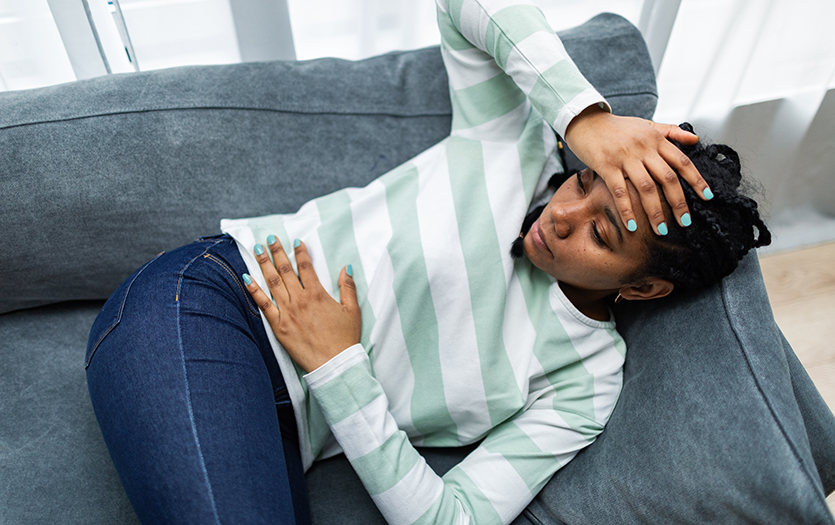
This post was written by Heather Willison, MSN, FNP-C, PPG – Allergy, Asthma & Immunology.
For many, spending time in the sun brings thoughts of basking in warm rays, soaking up vitamin D and partaking in outdoor activities. However, for others, exposure to sunlight may trigger an allergic reaction. In this post, we will examine the types and causes of sun allergies as well as treatments and prevention strategies to keep your skin protected throughout the warmer months.
What is a sun allergy?
The medical term for this condition is polymorphous light eruption (PMLE). It occurs when the immune system overreacts to sunlight. Common symptoms of PMLE include:
The most affected areas of the body are typically the arms and legs, the “V” of the neck or chest and on the backs of the hands. Individual allergic response times can vary and those who are affected may see changes to their skin occur within minutes of sun exposure or not until hours later.
Other sun-related reactions
PMLE is only one type of “sun allergy.” Individuals may experience sun-related reactions associated with their genetics, exposure to certain substances or due to some medications.
Hereditary Polymorphous Light Eruption
Also known as actinic prurigo is a much more severe form of PMLE. As the name suggests, hereditary PMLE tends to run in families and occurs more commonly in those of American Indian descent. This allergy is usually identified in early childhood or adolescence. For those diagnosed with actinic prurigo, the rash typically forms on the face, especially around the mouth.
Solar Urticaria
Solar Urticaria or solar hives, can affect anyone but is more common in young women. It causes hives to develop on sun-exposed skin within 30 minutes with the reaction lasting up to 2 hours after getting out of the sun or covering up. However, the hives may return when the skin is exposed to the sun again.
Photoallergic Eruption
This type of skin reaction primarily occurs for one or two reasons. The first is because of a substance that has been applied to the skin and then exposed to sunlight. These substances can include certain types of sunscreen, perfume, antibiotic cream or ointment, or scented moisturizer. The second instance occurs when certain medications are ingested and the skin is exposed to sunlight. Medications that cause this include antibiotics, over-the-counter nonsteroidal pain relievers and diuretics (water pills) that are used to treat conditions like high blood pressure or heart failure. Photoallergic skin reactions often have a delayed appearance and may not show for one to two days following sun exposure. The rash can also spread to areas of the skin that were covered by clothing.
Treatment
Rashes associated with PMLE, hereditary PMLE and solar urticaria usually resolve in two to three days if there is no further sun exposure. Symptoms caused by photoallergic eruption usually subside once the offending substance is identified and removed from the equation.
Cool compresses, oral antihistamines and over-the-counter topical steroid creams can help soothe the rash and itching. Severe reactions, especially with hereditary PMLE, may require a prescription for a more potent topical steroid.
If symptoms persist an alternative treatment option may include phototherapy. This is performed by a medical provider and involves gradually exposing the skin to increased doses of ultraviolet light. The goal is to decrease the skin’s sensitivity to the sun, allowing the individual to go out in the sunlight without any reaction.
Prevention
Taking proactive measures to prevent sun allergies involves minimizing UV exposure and avoiding substances that may trigger a reaction. For example:
- Stay out of the sun between the hours of 10 a.m. and 3 p.m., as this is when the rays are the strongest.
- Avoid sudden and prolonged exposure to the sun, instead gradually increase the amount of time spent in the sunlight.
- Wear at least SPF 30 sunscreen, sunglasses, and protective clothing.
- Avoid applying lotions, fragrances or other chemicals to the skin if you know a reaction has occurred in the past while using these products.
When to seek medical attention
If the rash does not show improvement despite the use of appropriate treatments or covers large areas of the body or face, consult with your primary care provider or pediatrician. If necessary, a referral may be made to see a dermatologist or allergist. If hives are accompanied by facial swelling and/or difficulty breathing, seek medical attention immediately.
Parkview Health has two Allergy, Asthma & Immunology practices in Fort Wayne and one practice in Auburn. If you're interested in establishing care with one of our providers, talk to your primary care provider or call 260-425-6070, Monday through Friday from 8 a.m. - 5 p.m.



